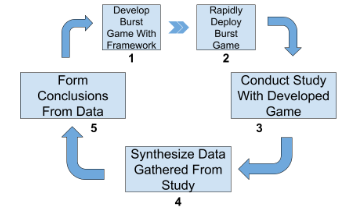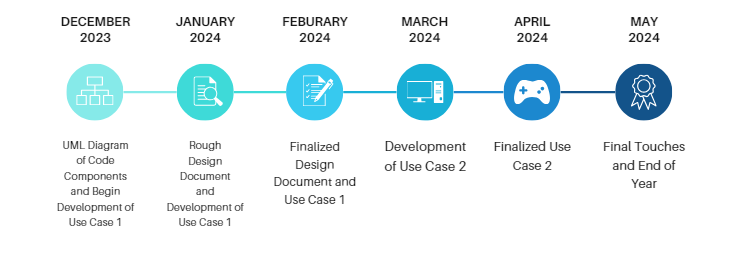Vaccine Games for Teens
Project Overview and Details

Team Medical Gaming Solutions aims to provide developers with a reusable, easy, and simple framework to create their own video games tailored to a medical subject. Our framework will provide developers with components, game mechanics, and more to quickly create burst video games, saving both time and money for our client. For this area of development, we will focus on creating use cases that aim to increase vaccination rates among adolescents.
The Problem
COVID-19 vaccination could play a critical role in not only improving the symptoms, but preventing hospitalizations and deaths related to such a disease as well, ending the pandemic situation. Yet, despite the possibility of such benefits, as of May 3, 2023, about 8.3 million U.S. children aged 12-17 and 17.4 million children aged 5-11 had yet to receive their first COVID-19 vaccine dose. Over 60% of people under 20 years of age had yet to receive a single dose of the vaccine in Arizona. Now, even with the apparent need to promote vaccine uptake among adolescents, there are currently no intervention studies underway aimed at improving these vaccination rates.
Indeed, seeing such a gap within an egregious issue, with a background in video game development, Ashish Amresh aims to fill this gap with video games directed at the adolescent. We are designing a content agnostic game development framework that can be used to rapidly make games for different domains, such as COVID-19 and HPV. Now, to increase the likelihood of improving vaccination rates with such an approach, we are designing within the context of clinics where teens and their parents frequent and are waiting for their appointments. And within such a context with limited interaction time, the games must therefore be fast -paced, fun, and at the same time provide a range of decision-making choices to fully engage the adolescents in addressing the outcomes. We will refer to the concept of fast-paced and engaging games as “burst games;” how our framework will focus on making games consisting of repetitive, quick “bursts” of gameplay that promotes learning by doing while minimizing the cost of failure and frustration for the player. Some examples of commercial burst games that we may follow are Angry Birds, and Puzzle Fighter. Link to the original project description
Our client's current workflow

Current Requirements
Functional Requirements
- • Knowledge Drop Components
- • Game Mechanics Repository
- • Data Management
Our Solution
To decrease the amount of development time for the video game to not impede upon the client’s workflow, our client needs a way to streamline the development process of such video games. And so, our proposed solution is to develop a content agnostic video game framework such that any developer may use it to expedite development of the video game by building on top of the framework, and filling the content agnostic components with whatever they need. The following is a list of specific features pertaining to our proposed framework.
- • Blank/placeholder knowledge-drop components.
- • Game structure templates.
- • Extendable classes/objects.
Improved Workflow

Technologies
itch.io
Our best chosen approach is Itch.io to publish and upload our games onto. It includes the necessary technologies, being HTML5 and WebGL, and also supports mobile device gameplay from the web browser. Itch.io also has an easy process of uploading games and related content to their platform and allows creators to customize their pages, which will be helpful when directing players to the desired information on the game.
Unity
Ultimately, we have decided to select Unity as our development engine based on client request and overall desired characteristics. Unity will provide the best services for our project requirements such as having an entity component system, the ability to extend the engines base components, and supporting a web browser as a host for a developed game
C#
Thorough testing and experimentation within our Unity environment locally, we confirmed that C# effectively meets the needs for our game development requirements. Our extensive research and practical exploration have reinforced our confidence in C# as the most suited and practical choice for our project.
Schedule
